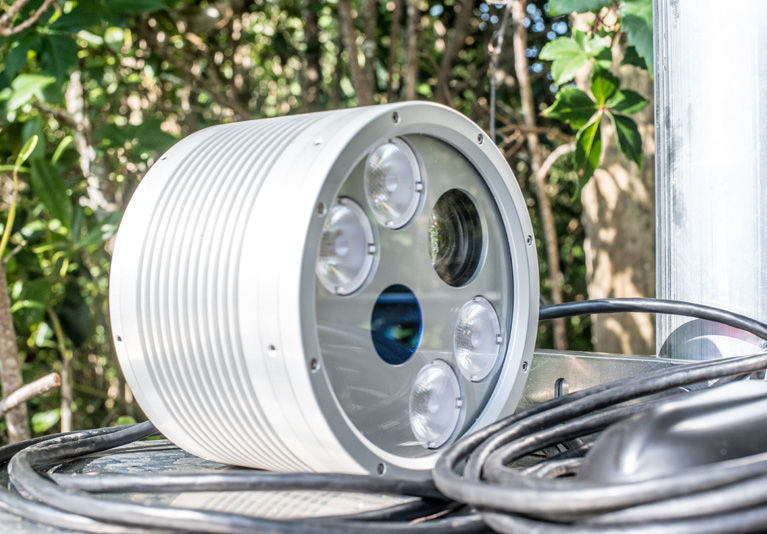
A month after Indian River Shores public safety department received a set of license plate cameras procured to photograph the tags of all vehicles entering and leaving the city – and linking the images to a statewide crime database – the system still is not operating as planned.
From technology challenges to state agency red tape, Indian River Shores public safety officers have learned a lesson in perseverance since the Town Council approved the $70,000 camera system last fall.
First of all, the Florida Department of Transportation nixed the idea of having the cameras – which have captured images of roughly 200,000 license plates plus continuous video of vehicle traffic in and out of the Shores on A1A since the system became partially operational – mounted on the state right of way.
Regrouping, the Shores negotiated agreements with property owners to place the cameras on private property. “But that 18 feet [setback from the road] made a big difference in how the cameras worked and how they had to be aimed,” Police Chief Rich Rosell said.
The next delay, after locations for the cameras were figured out, came when installers discovered they did not have the proper hardware to mount the cameras on poles.
After they got the cameras mounted and turned on, the video part of the camera was recording, but the angle of the laser beam – similar to the red dot of a laser pointer – wasn’t lining up right, and it took repeated attempts to get the two data recorders at the north end of the Shores and the two recorders at the south end to capture license plates as they were meant to.
Though the vendor, L3 Communications, has installed numerous roadside camera systems previously, Rosell said “every installation is different. Each one has its own challenges.”
Once the laser beams in the license-plate readers were finally aimed properly, they began recording about 10,000 license plate numbers a day.
That doesn’t mean 10,000 unique people going in and out of the tiny town each day, Lt. Mark Shaw explained. “Conceivably, we could get someone going to Disney and back and they would go by the camera four times,” Shaw said.
But the cameras still aren’t synced with state database, which is the most crucial part of the whole setup.
The final stage of the camera project is to get the tag numbers from the laser data reader to interface with the Florida Department of Law Enforcement’s database. This database, which police refer to as the “hot list,” includes information about outstanding warrants, revoked driver licenses, expired auto tags and be-on-the-lookout (BOLO) notices broadcast by various law enforcement agencies.
This is the part of the project that would deliver real-time information to police and enable Shores officers to be aware of criminals and suspicious characters entering or leaving the city.
Rosell said the delay in syncing was due to the Florida Department of Law Enforcement database’s need to make sure information in its database is secure and that it cannot be accessed by unauthorized personnel. In other words, that the data can’t be somehow hacked due to the Shores system being looped into it live.
Before the Town ordered the cameras, Rosell and Shaw said they checked with FDLE to make sure the system was permissible, but Shaw said they hit a snag when they notified FDLE the cameras were ready to go live. Recent changes in policies and a couple of personnel changes at the state agency have slowed things down, Rosell said.
As of press time Monday, Shaw said the final approval to make the “hot list” interface go live should be forthcoming shortly.
In the meantime, the Shores cameras are still presumably having the deterrent effect of making anyone with a warrant, revoked driver license or expired tag think twice about driving through the Town. And, should Shores officers need to solve a crime, they can still use the video and data being gleaned from the cameras.



